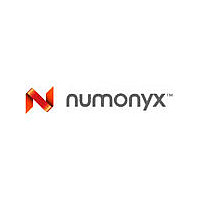N25Q128A13BF840F NUMONYX, N25Q128A13BF840F Datasheet - Page 26

N25Q128A13BF840F
Manufacturer Part Number
N25Q128A13BF840F
Description
IC SRL FLASH 128MB NMX 8-VDFPN
Manufacturer
NUMONYX
Series
Forté™r
Datasheet
1.N25Q128A13B1240F.pdf
(157 pages)
Specifications of N25Q128A13BF840F
Format - Memory
FLASH
Memory Type
FLASH
Memory Size
128M (16M x 8)
Speed
108MHz
Interface
SPI, 3-Wire Serial
Voltage - Supply
2.7 V ~ 3.6 V
Operating Temperature
-40°C ~ 85°C
Package / Case
*
Lead Free Status / RoHS Status
Lead free / RoHS Compliant
Available stocks
Company
Part Number
Manufacturer
Quantity
Price
Company:
Part Number:
N25Q128A13BF840F
Manufacturer:
NSC
Quantity:
244
Part Number:
N25Q128A13BF840F
Manufacturer:
ST
Quantity:
20 000
Operating features
5.2
5.2.1
5.2.2
26/157
Driving Reset (Reset) Low while an internal operation is in progress will affect this operation
(write, program or erase cycle) and data may be lost. On Reset going Low, the device enters
the reset mode and a time of tRHSL is then required before the device can be reselected by
driving Chip Select (S) Low. For the value of tRHSL, see
the lock bits are reset to 0 after a Reset Low pulse.
The Hold/Reset feature is not available when the Hold (Reset) / DQ3 pin is used as I/O
(DQ3 functionality) during Quad Instructions: QOFR, QIOFR,QIFP and QIEFP.
The Hold/Reset feature can be disabled by using of the bit 4 of the VECR.
Dual SPI (DIO-SPI) Protocol
In the Dual SPI (DIO-SPI) protocol all the instructions, addresses and I/O data are
transmitted on two data lines. All the functionality available in the Extended SPI protocol is
also available in the DIO-SPI protocol. The DIO-SPI instructions are comparable with the
Extended SPI instructions; however, in DIO-SPI, the instructions are multiplexed on the two
data lines, DQ0 and DQ1.
The only exceptions are the READ, Quad Read, and Program instructions, which are not
available in DIO-SPI protocol, and the RDID instruction, which is replaced in the DIO-SPI
protocol by the Multiple I/O Read Identification (MIORDID) instruction.
The Multiple I/O Read Identification Instruction reads just the standard SPI electronic ID (3
bytes), while the Extended SPI protocol RDID instruction allows access to the UID bytes.
To help the application code port from Extended SPI to DIO-SPI protocol, the instructions
available in the DIO-SPI protocol have the same operation code as the Extended SPI
protocol, the only exception being the MIORDID instruction.
Multiple I/O Read Identification
The Multiple I/O Read Identification (MIORDID) instruction is available to read the device
electronic ID.With respect to the RDID instruction of the Extended SPI protocol, the output
data, shifted out on the 2 data lines DQ0 and DQ1.
Since the read ID instruction in the DIO-SPI protocol is limited to 3 bytes of the standard
electronic ID, the UID bytes are not read with the MIORDID instruction
Dual Command Fast reading
Reading the memory data multiplexing the instruction, the addresses and the output data on
2 data lines can be achieved in DIO-SPI protocol by mean of the Dual Command Fast Read
instruction, that has 3 instruction codes (BBh, 3Bh and 0Bh) to help the application code
porting from Extended SPI protocol to DIO-SPI protocol. Of course quad and single I/O
Read instructions are not available in DIO-SPI mode.
For Dual Command fast read instructions the number of dummy clock cycles is configurable
by using VCR bits [7:4] or NVCR bits [15:12].
After a successful reading instruction, a reduced tSHSL equal to 20ns is allowed to further
improve random access time (in all the other cases tSHSL should be at least 50 ns). See
Table 36.: AC
Characteristics.
Micron Technology, Inc., reserves the right to change products or specifications without notice.
Table 36.: AC
©2010 Micron Technology, Inc. All rights reserved.
Characteristics. All
N25Q128 - 3 V












